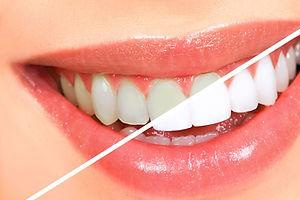
We all want our teeth whiter, but many times people are cautious because they don’t want to do any damage to their teeth. With the increasing popularity of whitening, more products have become available and it can be hard to know what works and more importantly if they are safe for long term use. Today we’ll take a look at the safety of these whitening agents, and next time which type of whitening would benefit you the most.
While there are different types of chemicals and varying concentrations, whitening products work in one of two ways. The first is with abrasives that wear away stains, and the second is with certain chemicals that breakdown and remove stain.
All toothpastes are given a rating between 0-250 on how abrasive they are to tooth structure, with 250 being the most abrasive. Most whitening toothpastes rate between 150-250, however is this something to be worried about? The American Dental Association says that whitening toothpaste can be safe with proper brushing technique. However, many of us find ourselves brushing too aggressively or not using the recommended soft or extra soft brush. Couple that with an abrasive toothpaste, and you are certain to wear away enamel over an extended period of time. We all lose enamel as part of the normal aging process, so we don’t need to incorporate anything that is going to accelerate that process.
Due to this risk, we always recommend the use of whitening strips, trays, or in office treatments. Without getting too technical, these products use a substance that open up the small tubules in your teeth and allow for the breakdown and removal of these stains with oxygen. Zoom whitening uses the same type of process but a special light is added to speed up the activity of the chemical. This opening of the tubules of the teeth can lead to cold sensitivity and makes people think that they are harming their teeth. However, no structural damage is being done and the sensitivity is only temporary.
MAIN TAKEAWAYS
- Whitening toothpastes work by use of abrasive particles and can lead to removal of enamel over time
- Whitening strips, trays, and Zoom work by certain chemicals opening tubules of the teeth to allow for removal of stain, and cause no damage to the enamel
- Whitening strips, trays, and Zoom can cause the teeth to be sensitive to cold, however it is only temporary
REFERENCES
- Dörfer CE. (2010) Abrasivity of dentifrices from a clinical perspective. J Clin Dent. 21 (Suppl): S4.
- Hitchin PC, Robinson HBG. (1948) How abrasive need a dentifrice be? J Dent Res. 27;501-506.Hefferren JJ. (1976) A laboratory method for assessment of dentifrice abrasivity. J Dent Res. 55 (4): 563-73.
- http://www.ada.org/en/member-center/oral-health-topics/toothpastes
